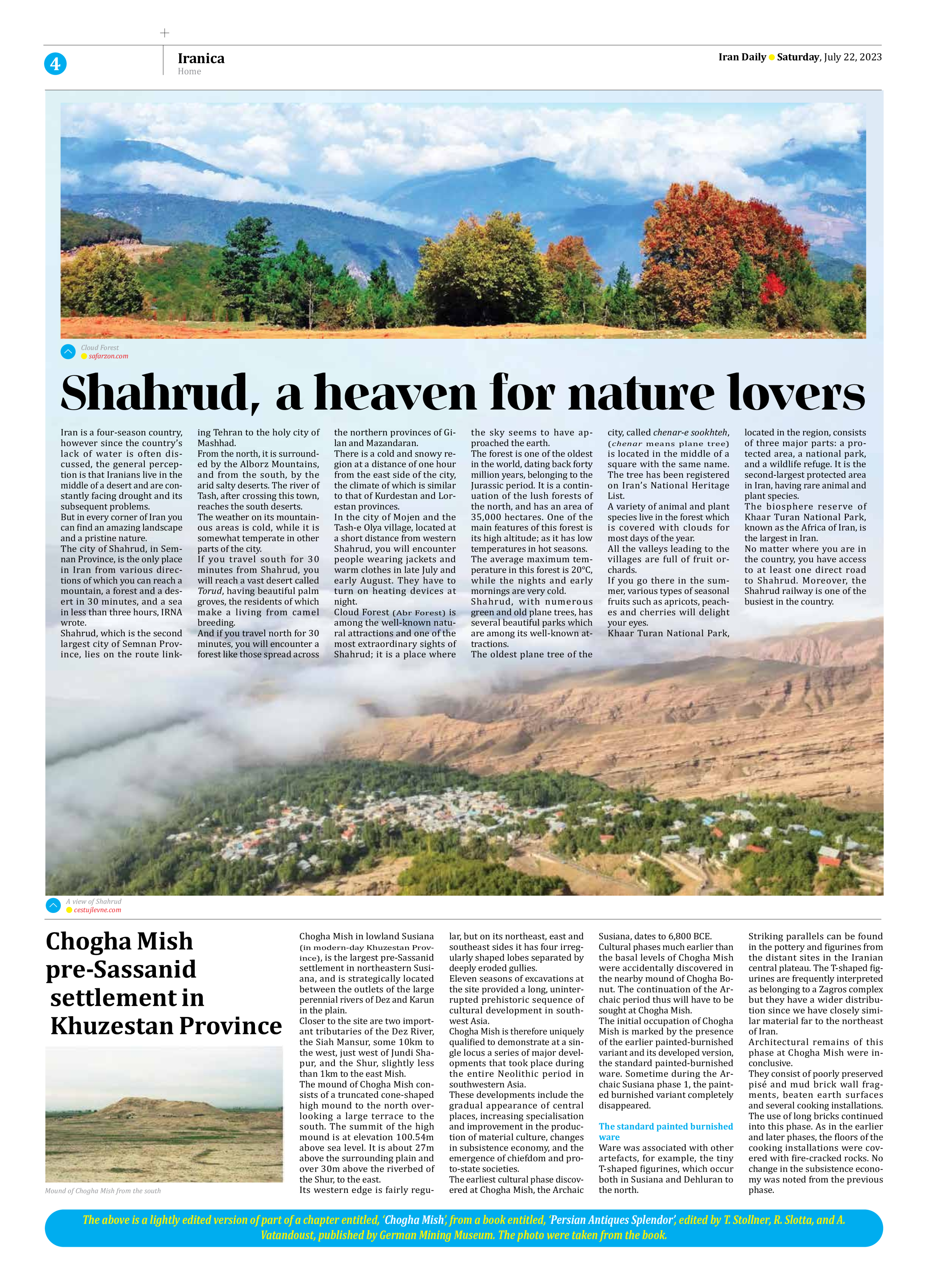
Chogha Mish pre-Sassanid settlement in Khuzestan Province
Chogha Mish in lowland Susiana (in modern-day Khuzestan Province), is the largest pre-Sassanid settlement in northeastern Susiana, and is strategically located between the outlets of the large perennial rivers of Dez and Karun in the plain.
Closer to the site are two important tributaries of the Dez River, the Siah Mansur, some 10km to the west, just west of Jundi Shapur, and the Shur, slightly less than 1km to the east Mish.
The mound of Chogha Mish consists of a truncated cone-shaped high mound to the north overlooking a large terrace to the south. The summit of the high mound is at elevation 100.54m above sea level. It is about 27m above the surrounding plain and over 30m above the riverbed of the Shur, to the east.
Its western edge is fairly regular, but on its northeast, east and southeast sides it has four irregularly shaped lobes separated by deeply eroded gullies.
Eleven seasons of excavations at the site provided a long, uninterrupted prehistoric sequence of cultural development in south-west Asia.
Chogha Mish is therefore uniquely qualified to demonstrate at a single locus a series of major developments that took place during the entire Neolithic period in southwestern Asia.
These developments include the gradual appearance of central places, increasing specialisation and improvement in the production of material culture, changes in subsistence economy, and the emergence of chiefdom and proto-state societies.
The earliest cultural phase discovered at Chogha Mish, the Archaic Susiana, dates to 6,800 BCE.
Cultural phases much earlier than the basal levels of Chogha Mish were accidentally discovered in the nearby mound of Chogha Bonut. The continuation of the Archaic period thus will have to be sought at Chogha Mish.
The initial occupation of Chogha Mish is marked by the presence of the earlier painted-burnished variant and its developed version, the standard painted-burnished ware. Sometime during the Archaic Susiana phase 1, the painted burnished variant completely disappeared.
The standard painted burnished ware
Ware was associated with other artefacts, for example, the tiny T-shaped figurines, which occur both in Susiana and Dehluran to the north.
Striking parallels can be found in the pottery and figurines from the distant sites in the Iranian central plateau. The T-shaped figurines are frequently interpreted as belonging to a Zagros complex but they have a wider distribution since we have closely similar material far to the northeast of Iran.
Architectural remains of this phase at Chogha Mish were inconclusive.
They consist of poorly preserved pisé and mud brick wall fragments, beaten earth surfaces and several cooking installations. The use of long bricks continued into this phase. As in the earlier and later phases, the floors of the cooking installations were covered with fire-cracked rocks. No change in the subsistence economy was noted from the previous phase.
The above is a lightly edited version of part of a chapter entitled, ‘Chogha Mish’, from a book entitled, ‘Persian Antiques Splendor’, edited by T. Stollner, R. Slotta, and A. Vatandoust, published by German Mining Museum. The photo were taken from the book.







